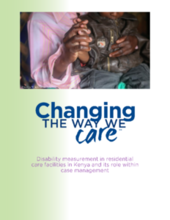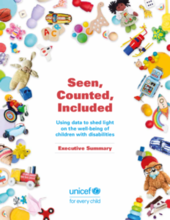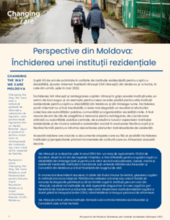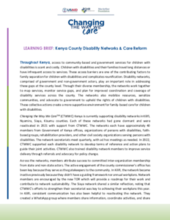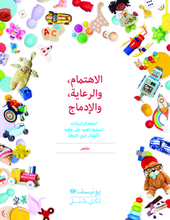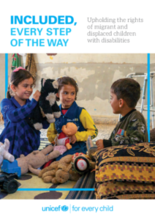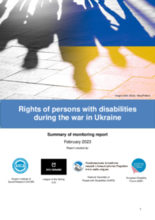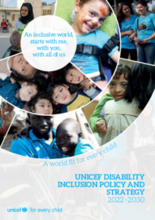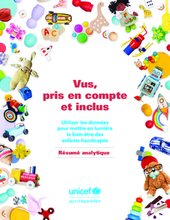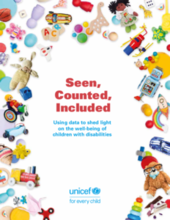Displaying 11 - 20 of 462
Though research has been conducted on children with disabilities and on children in residential care settings, the intersections of these two topics has yet to be explored in depth. Notably, there is a lack of information surrounding disability measurement within residential care settings, highlighting a gap in the literature. It is estimated that a child with a disability is 17 times more likely to be placed in an institutionalized care setting than a child without a disability, and girls are more likely to be placed in an institution than boys. This report details research conducted in Kenya.
The report’s objective is to promote the use of these data to make children with disabilities more visible, bringing about a fuller understanding of their life experiences.
După 60 de ani de activitate în calitate de instituție rezidențială pentru copii cu dizabilități, Școala-Internat Auxiliară Hîncești (SIA Hîncești) din Moldova și-a închis, în cele din urmă, ușile în mai 2022. Închiderea SIA Hîncești și reintegrar
This learning brief shares learning from Kenya around the barriers that contribute to family separation for children with disabilities and how disability networks are working to create a supportive environment for family-based care for these children.
تخل جهود نمضالإعاقة يللأطفال ذو جالإدما دصرعملية تلَّطعتلطالما شاملة. غير أنّ السنوات الأخيرةو ٍةقالتنمية بسبب الافتقار إلى بياناتٍ موثو الأدواتوشهدت جهوداً مُجدَّدة كانت ترمي إلى سدّ الثغرات في البيانات. أدَّت إلى زيادةٍ كبيرة في توافر دقلجمع البيانات تَث ِدحُالجديدة التي است رُوْلبت زّالإعاقة، الأمر الذي عز يجودة البيانات المتعلقة بالأطفال ذوو ج المعرفة.اتنالتحليلات الجديدة وساهم في زيادة إ
Children with disabilities and children on the move represent highly diverse populations living in a broad range of circumstances. But as two of the most marginalized groups of children in the world, there is much they have in common, often-times neglected in data collection, policies and programming. This report examines children’s lives when these two identities intersect.
Brief overview of the situation regarding the rights of people with disabilities in Ukraine one year after the beginning of the invasion of Ukraine by Russia.
UNICEF's DIPAS is a roadmap for greater cross-sectoral coordination for disability inclusion to be mainstreamed across the organization at every level to meet the needs of the world’s 240 million children with disabilities.
L’objectif du présent rapport est de promouvoir l’utilisation de ces données afin de rendre les enfants handicapés davantage visibles et de mieux comprendre leurs expériences de vie.
Millions of children with disabilities around the globe continue to be left behind, despite the near-universal ratification of the Convention on the Rights of the Child, the call for action embedded in the Convention on the Rights of Persons with

